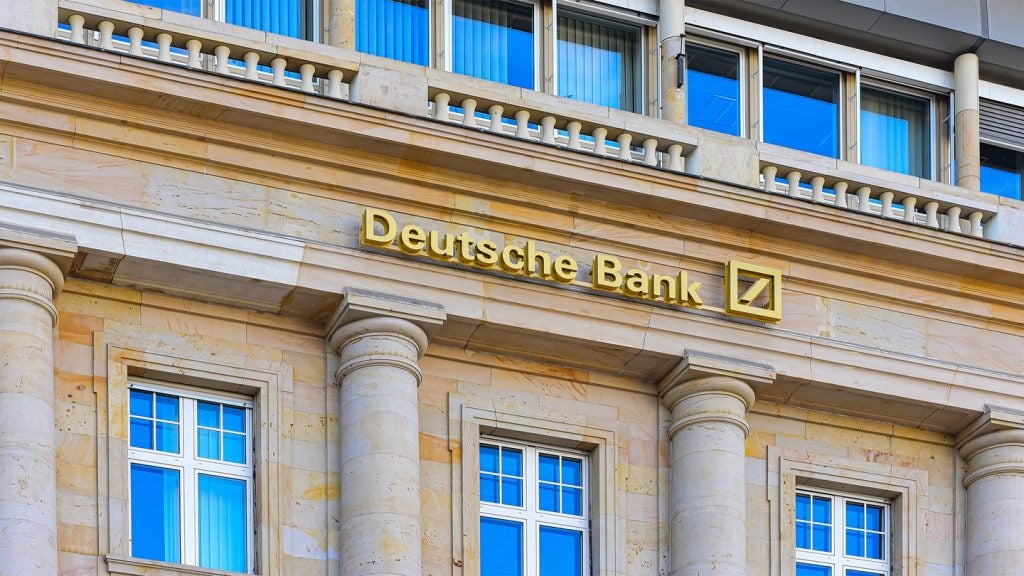With the disappearance of Wachovia and Washington Mutual
and the break-up of Citigroup, the US retail banking market has
become dominated by the Big Three of Wells Fargo, Bank of America
and Chase. Combined, the three control over 30 percent of US
deposits. Hugh Fasken and John Hill report.
This year’s US banking full-year 2008 results are
notable for a number of reasons but two stand out: the worst
profits slump in a generation and the deletion from history of a
number of once-mighty institutions.
Wachovia, Washington Mutual and National City are gone, while
two of the leading franchises, Sovereign Bancorp and Union Bank of
California, join Citizens as financial groups now fully owned by
foreign banking entities.
The list of the biggest US banks is markedly different from the
last financial year: 2007’s mid-tier brands such as PNC Financial
and BB&T are now in the big league, looking stronger than
giants such as Citigroup and, perhaps, Bank of America (see RBI
605).The big question is which groups will merge, acquire or
disappear over the course of 2009. Citigroup, which posted a $19
billion loss for 2008 and remains underpinned by a $300 billion US
federal government guarantee, is being broken up into two parts –
though further disposals are more than likely.
And pressure for mid-tier players to merge with rivals remains
intense: Capital One Financial, Fifth Third Bancorp, KeyCorp,
Huntington Bancshares and SunTrust Banks all announced sharp
fourth-quarter losses (see table below) which
dragged down full-year figures and could add further impetus for
them to consolidate in early 2009.
Analysts at RBC Capital Markets put out a note recently
projecting that 200 to 300 small banks might fail or be forced into
mergers over the next year or so, compared to 25 bank failures in
2008 (the highest number since 1993). During the savings-and-loans
crisis in the US between 1989-1993, which at the time was the worse
banking crisis since the Great Depression but has now been
superseded, some 1,418 banks failed – though the sharply different
point of the failures this time is size.
How well do you really know your competitors?
Access the most comprehensive Company Profiles on the market, powered by GlobalData. Save hours of research. Gain competitive edge.

Thank you!
Your download email will arrive shortly
Not ready to buy yet? Download a free sample
We are confident about the unique quality of our Company Profiles. However, we want you to make the most beneficial decision for your business, so we offer a free sample that you can download by submitting the below form
By GlobalDataThe collapse of the $308-billion-asset Washington Mutual in
September last year remains the largest US retail bank failure of
all time – and was, on an asset basis, worth alone half of the
1,418 institutional failures between 1989-1993 (total assets of
$641 billion).
|
Market leaders |
|
|
Top 10 US banks ranked by |
|
|
Bank |
Nos of branches |
|
Bank of America |
6,139 |
|
Wells Fargo |
5,897 |
|
JPMorgan Chase |
5,474 |
|
US Bank |
2,791 |
|
PNC Financial |
2,589 |
|
Regions Financial |
1,900 |
|
SunTrust Banks |
1,692 |
|
BB&T |
1,511 |
|
Fifth Third Bancorp |
1,307 |
|
TD Bank (1) |
1,062 |
|
(1) US branches only. Source: |
|
Gap between big and small getting wider
What is clear is that the gap between the big banks and mid- and
small-tier groups grew more pronounced in 2008 – and this will only
get worse if mid-tier banks merge with or acquire each other.
Looking at the RBI research, the largest five banks by assets in
the US – Bank of America, JPMorgan Chase, Citi, Wells Fargo and PNC
Financial – now control 21,000 branches or 21 percent of the 99,105
branches in total across the US.
According to FDIC figures, there were 8,430 banks in the US at
the end of 2008, made up of 7,203 commercial banks (with 85,283
branches) and 1,227 savings institutions (13,867 branches).
On a total deposits and asset basis, the big banks have even
more muscle. According to figures from Wells Fargo, the top three
retail banks – Bank of America, Wells Fargo and Chase – now control
32.7 percent of deposits, a stark concentration of liabilities.
Bank of America has an 11.3 percent market share, Wells Fargo
11.2 percent and Chase 10.2 percent. Citi, in contrast, has a 3.5
percent market share.
The problem for regulators and the new Obama presidency is that
if banks and financial institutions in the US were ‘too big to
fail’ before the financial crisis, many of the ones left are even
bigger.
Any strong performers?

TD Bank, which, despite belonging to Canada’s Toronto-Dominion
empire now operates the sixth-largest US retail banking franchise
following its acquisition of Commerce Bank in 2007 for $8 billion,
and North Carolina-based BB&T were two of the better performers
in 2008.
The latter has been tipped as a probable acquirer of rivals in
2009 as it looks to capitalise on depressed asset prices to grow
quickly (and cheaply). It has already started to strike strategic
deals: on 12 December last year it bought $506 million in deposits
from the failed Haven Trust Bank of Duluth through an agreement
with the FDIC.
For the full-year, BB&T’s net income was $1.50 billion
compared to $1.73 billion earned in 2007, a decrease of 13.6
percent. The provision for credit losses totalled $528 million in
the fourth quarter of 2008, an increase of $344 million
year-on-year.
Revenues from mortgage banking operations totalled $76 million
for the fourth quarter of 2008, an increase of 181.5 percent
compared to the fourth quarter of 2007 – thanks largely to the
adoption of fair value accounting standards (it was up 21.9 percent
without the adoption).
The group’s CEO, Kelly King, said in a statement: “BB&T is
gaining market share and growing. We are implementing initial plans
to deploy the capital invested in BB&T in connection with the
US Treasury’s Capital Purchase Program, which include specific
lending programs where we are actively seeking new borrowers.
“In addition, our pre-tax pre-provision earnings increased 10.6
percent in the fourth quarter compared to the same period last year
and we generated positive operating leverage for the year. These
indicators demonstrate solid underlying performance and consistent
earnings power.”
Overall, TD Bank – which describes itself as ‘the first truly
North American bank’ – had perhaps the strongest year, though its
franchise was helped by its relatively healthier Canadian arm.
Talking about his group’s retail franchise, Ed Clark, CEO of
Toronto-Dominion Bank Financial Group (TDBFG), said: “TDBFG’s
retail business was the engine of our earnings – both north and
south of the [US] order. We said our goal was to get close to $4
billion in retail adjusted earnings in 2008 – and we
delivered.”
He added: “[A key] decision was to avoid subprime lending in the
US… We have only made loans to creditworthy people in areas of the
country that have largely avoided the housing collapse and are
relatively stronger economically.
“As a result of our footprint, conservative lending practices
and strong credit culture, our reserves far exceed our credit
losses.”
Last year TD Bank also made the decision to shift its business
mix to focus on retail banking business, which, Clark said,
“delivers a consistent, reliable and steady stream of
revenues”.
Over 90 percent of group total adjusted earnings now come from
TD Bank’s united North American retail banking operations.
|
Interest margin |
|
|
Net interest margin at US |
|
|
Bank |
Margin (%) |
|
Wells Fargo |
4.83 |
|
Bank of America |
2.98 |
|
Citi |
2.96 |
|
JPMorgan Chase |
2.87 |
|
Source: RBI |
|
In sharp contrast…
In sharp contrast, one of the worst performers in 2008 was
Regions Financial. In the wake of its 2006 acquisition of rival
AmSouth Bancorp, Regions became a top-10 US bank holding
company.
But 2008 was a dreadful year for the Alabama-based business: it
was hit by fourth quarter net loss of $6.2 billion, bringing
full-year results to a net loss of $5.6 billion, though these
results included a $6.0 billion goodwill impairment charge.
Fourth quarter provision for loan losses increased to $1.15
billion, $354 million above net charge-offs and $733 million higher
than the third quarter.
Dowd Ritter, chairman, president and CEO of Regions Financial,
said: “We fully acknowledge the challenges that we face in
2009.
“We have been aggressively preparing for those challenges and
will continue to take appropriate actions to successfully steer
Regions through this difficult environment.”
Looking ahead, Regions, according to Ritter, remains focused on
profitably growing deposits, “taking advantage of opportunities to
deepen existing customer relationships as well as develop new
long-term relationships”.
Total customer deposits grew 4 percent on average in the fourth
quarter, reflecting strong certificate of deposit growth in
response to competitive offers. Net new consumer checking household
growth picked up dramatically late in the year to an annualised
rate of 3.2 percent, which is double the growth rate of 2007.
Other mid-tier banks which suffered badly in the fourth quarter
were Capital One, Fifth Third, KeyCorp and Zions Bancorporation –
and the latter three have been suggested as possible acquisition
targets.
Richard Fairbank, Capital One’s chairman and CEO, will have to
prove that his acquisition of Chevy Chase Bank last December for
$520 million (see RBI 604) was the right deal at the right
time.
The purchase placed Capital One, which spent the past two years
diversifying away from cards and into mainstream banking, in the
top ten list of US retail banks by deposits (it has $108.6 billion
in total).
But Capital One, which announced a net loss for the full year of
$46.0 million compared with earnings of $1.6 billion in 2007, has
its own deteriorating card and loan book to deal with as well as
Chevy Chase’s souring $11.8 billion assets.
Capital One’s fourth quarter charge-off rate in its US card
business was an ugly 7.08 percent and the company now expects that
the US card charge-off rate for the first quarter of 2009 will be
around 8.1 percent.
|
Distribution |
||||
|
Selected US banking groups ranked |
||||
|
Bank |
Nos of branches |
Nos of ATMs |
Nos of retail customers |
Cost-income ratio (%) |
|
Bank of America |
6,139 |
18,685 |
59 |
56.1 |
|
Wells Fargo |
5,897 |
6,960 |
15.8 |
53.7 |
|
JPMorgan Chase |
5,474 |
14,568 |
24.5 |
65 |
|
US Bank |
2,791 |
4,897 |
n/a |
47.4 |
|
PNC Financial |
2,589 |
6,232 |
6 |
62 |
|
Regions Financial |
1,900 |
2,336 |
n/a |
156 |
|
SunTrust Banks |
1,692 |
2,582 |
n/a |
63.9 |
|
BB&T |
1,511 |
2,195 |
n/a |
52.1 |
|
Fifth Third Bancorp |
1,307 |
2,341 |
3.2 |
70.4 |
|
TD Bank (1) |
1,062 |
5,300 |
17 |
69.8 |
|
Citi (1) |
1,015 |
n/a |
32.4 |
115.9 |
|
KeyCorp |
986 |
1,478 |
n/a |
93.5 |
|
Capital One (2) |
738 |
1,311 |
50 |
59.7 |
|
M&T Bank |
700 |
1,600 |
n/a |
54.4 |
|
Huntington Bancshares |
600 |
1,400 |
n/a |
57 |
|
Zions Bancorporation (3) |
525 |
617 |
n/a |
67.5 |
|
Comerica |
439 |
n/a |
n/a |
64.7 |
|
Hudson City Bancorp |
127 |
116 |
n/a |
20.84 |
|
Notes: (1) Branch, ATM and customer numbers |
||||
A market dominated by the Big Three
With the disappearance of Wachovia and Washington Mutual, and
the break-up of Citi, the US market will become a market dominated
by the Big Three. Chase, the third biggest, has already begun the
rapid integration of Washington Mutual as it looks to become a
coast-to-coast full service player (see Looking forwards not
back).
Wells Fargo, a much respected institution (see Wells Fargo
gets personal), reported full year figures of $2.84 billion,
down 65 percent year-on-year. It said that it had ‘de-risked’ $37.2
billion in credit write-downs at Wachovia and, overall, had reduced
Wachovia’s loan book by $115 billion since June last year.
Wells Fargo reported that it had benefitted from a record 31
percent annualised growth in average core deposits; a record
cross-sell ratio of 5.73 products for retail bank households;
mortgage applications of $116 billion, up 158 percent (annualised);
and mortgage market share up to 12 percent.
It also stated that it had the highest growth in pre-tax
pre-provision earnings, up 18 percent, among large bank peers, as
well as the highest net interest margin, return on equity, return
on assets and highest total shareholder return. “In 2008, Wells
Fargo remained in a league of its own,” stated CFO, Howard
Atkins.
And Bank of America? The controversial, rushed Merrill Lynch
acquisition last October has rocked the once-mighty franchise and
damaged its brand. The fall-out from the deal may not only claim
the scalp of CEO Kenneth Lewis, for a long time one of the most
admired US bankers, it may also irreversibly destabilise the most
admired and successful retail banking franchise in the world.

US survey
Top 18 banking groups ranked by retail
deposits
| Group profit ($m) | |||||
| Q4 | FY08 | FY07 | % change | ||
| Bank of America | -1,789 | 4,008 | 14,982 | -73.2 | |
| JPMorgan Chase (2) | 702 | 5,605 | 15,365 | -63.5 | |
| Wells Fargo (3) | -2,547 | 2,842 | 8,057 | -64.7 | |
| Citi (4) | -8,294 | -18,715 | 3,617 | -617.4 | |
| BB&T (5) (6) | 305 | 1,519 | 1,734 | -12.4 | |
| Regions Financial (5) (7) | -6218 | -5,595 | 1,251 | -547.2 | |
| SunTrust Banks | -348 | 796 | 1,634 | -51.3 | |
| Capital One (6) | -1,421 | -47 | 1,570 | -103 | |
| US Bank | 330 | 2,946 | 4,324 | -31.9 | |
| TD Bank (4) | 1,014 | 3,833 | 3,997 | -4.1 | |
| Fifth Third Bancorp (8) | -2,142 | -2,113 | 1,076 | -296.4 | |
| PNC Financial (9) | -248 | 882 | 1,467 | -39.9 | |
| KeyCorp | -524 | -1,468 | 919 | -259.7 | |
| M&T Bank (5) (7) | 102 | 556 | 654 | -15 | |
| Huntington Bancshares | -417 | -114 | 75 | -252 | |
| Comerica | 20 | 213 | 686 | -69 | |
| Zions Bancorp-oration (10) | -483 | -266 | 494 | -153.8 | |
| Hudson City Bancorp (11) | 124 | 446 | 296 | 50.7 | |
| Retail banking profit ($m) (1) |
|||||
| Q4 | FY08 | FY07 | % change | ||
| Bank of America | 835 | 4,234 | 9,362 | -54.8 | |
| JPMorgan Chase (2) | 253 | 1,660 | 5,844 | -71.6 | |
| Wells Fargo (3) | -1,223 | 3,025 | 5,293 | -42.8 | |
| Citi (4) | -2,536 | -5,058 | 3,493 | -244.8 | |
| BB&T (5) (6) | n/a | n/a | 1,634 | n/a | |
| Regions Financial (5) (7) | n/a | n/a | 288 | n/a | |
| SunTrust Banks | 18 | 307 | 790 | -61.1 | |
| Capital One (6) | -6 | 225 | 574 | -60.8 | |
| US Bank | 209 | 1,203 | 1,830 | -34.3 | |
| TD Bank (4) | 276 | 806 | 359 | 124.5 | |
| Fifth Third Bancorp (8) | -33 | 465 | 751 | -38.1 | |
| PNC Financial (9) | 15 | 429 | 876 | -51 | |
| KeyCorp | 33 | 345 | 538 | -35.9 | |
| M&T Bank (5) (7) | n/a | n/a | 316 | n/a | |
| Huntington Bancshares | n/a | n/a | 103 | n/a | |
| Comerica | -34 | 34 | 128 | -73.4 | |
| Zions Bancorp-oration (10) | n/a | n/a | n/a | n/a | |
| Hudson City Bancorp (11) | n/a | n/a | n/a | n/a | |
| Group assets ($bn) | |||||
| FY08 | FY07 | % change | |||
| Bank of America | 1,818 | 1,716 | 5.9 | ||
| JPMorgan Chase (2) | 2,176 | 1,562 | 39.3 | ||
| Wells Fargo (3) | 1,309 | 575 | 127.7 | ||
| Citi (4) | 1,945 | 2,187 | -11.1 | ||
| BB&T (5) (6) | 152 | 132 | 15.2 | ||
| Regions Financial (5) (7) | 146 | 141 | 3.5 | ||
| SunTrust Banks | 189 | 175 | 8 | ||
| Capital One (6) | 166 | 150 | 10.7 | ||
| US Bank | 254 | 229 | 10.9 | ||
| TD Bank (4) | 563.2 | 392.9 | 43.3 | ||
| Fifth Third Bancorp (8) | 114 | 102 | 11.8 | ||
| PNC Financial (9) | 291 | 139 | 109.4 | ||
| KeyCorp | 105 | 98 | 7.1 | ||







